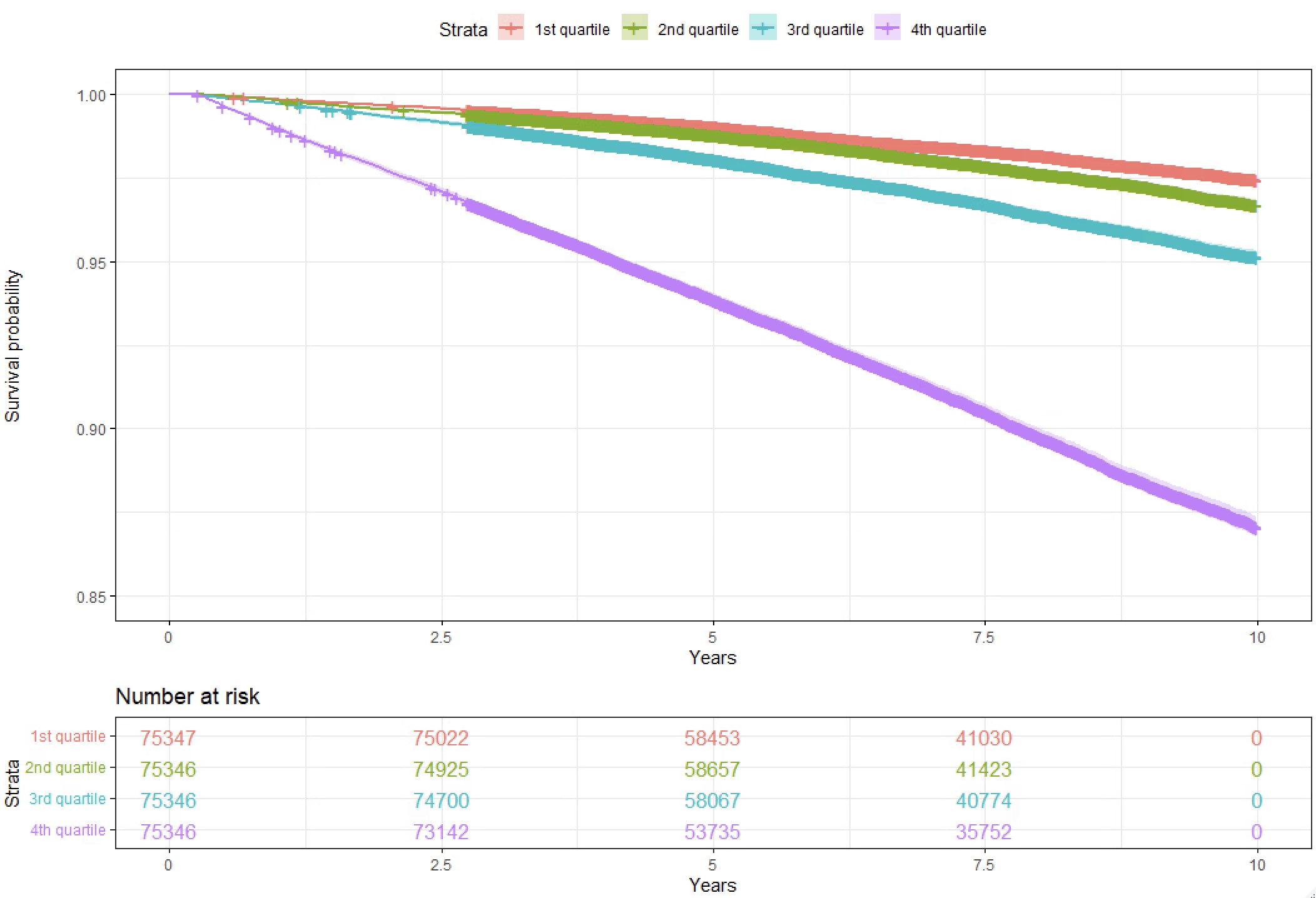Session Information
Date: Sunday, November 17, 2024
Title: Metabolic & Crystal Arthropathies – Basic & Clinical Science Poster II
Session Type: Poster Session B
Session Time: 10:30AM-12:30PM
Background/Purpose: Hyperuricemia is considered the most important risk factor for developing Gout, the most common adult inflammatory arthritis. Hyperuricemia is defined by a serum urate (SU) level exceeding urate solubility ≥ 6.8 mg/dl, at which monosodium urate crystals begin to precipitate. A study from 1987 described a cohort of approximately 2,000 healthy men who were followed for 15 years with serial measurement of SU levels. The annual incidence rate of gout was (0.1, 0.5, 4.9 percent) with prior SU levels of (< 7; 7-8.9; 9 mg/dl or more), respectively. A more recent study showed the 15-year cumulative incidence of gout in individuals with hyperuricemia ranged from 1.1% for SU < 6mg/dL to 49% for SU ≥10mg/dL. In this study, we aim to explore the incidence of gout among individuals with hyperuricemia over time using a large-scale cohort dataset.
Methods: Data was extracted from the Clalit Health Services national patient database between January 2007 and December 2022. We included adults with at least two SU measurements of more than 6.8 mg/dL. Patients with prior gout diagnoses or urate-lowering medications were excluded. The primary outcome was gout diagnosis, according to ICD-9 diagnosis, for at least 90 days after the second record of hyperuricemia (SU >6.8 mg/dl). Individuals were divided into four quartiles according to their second SU level. Survival analysis using Cox regression was performed to describe the dynamics of gout incidence across the four quartiles.
Results: 301,385 individuals were defined as having hyperuricemia, of which 15,055 (5%) were diagnosed with gout. There were 75,346 patients with hyperuricemia in each quartile. The mean and median of the second SU level of each quartile were 6.95/6.96 mg/dl, 7.20/7.20 mg/dl, 7.58/7.60 mg/dl, and 8.62/8.38 mg/dl, accordingly. Individuals with hyperuricemia from the highest SU quartile showed the steepest linear decline rate of gout-free survival (log-rank test PV< 0.0001). Thirteen percent (13%) of individuals in the highest SU quartile developed gout over 10 years, translating into an annual incidence rate of gout of 1.3 percent (in that fourth quartile). In a multivariate analysis, SU level, BMI, age, and sex were all statistically significantly associated with gout-free survival.
Conclusion: The annual incidence rate of gout was 1.3 percent (1.3%) in the highest SU quartile of individuals with hyperuricemia derived from a large dataset
To cite this abstract in AMA style:
Brikman S, Bieber A, Serfaty, MA L, Abuhasira, MD, PhD R, Rappoport N, Schlesinger N. The Incidence of Gout Among Individuals with Hyperuricemia over Time – an Insight from a Nationwide Cohort Study [abstract]. Arthritis Rheumatol. 2024; 76 (suppl 9). https://acrabstracts.org/abstract/the-incidence-of-gout-among-individuals-with-hyperuricemia-over-time-an-insight-from-a-nationwide-cohort-study/. Accessed .« Back to ACR Convergence 2024
ACR Meeting Abstracts - https://acrabstracts.org/abstract/the-incidence-of-gout-among-individuals-with-hyperuricemia-over-time-an-insight-from-a-nationwide-cohort-study/

